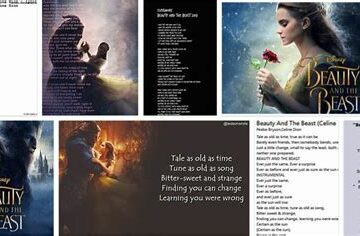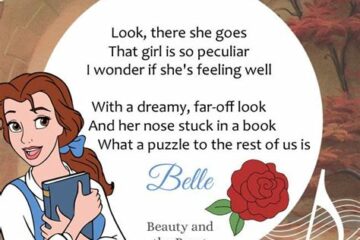The Evolution Of The Beast Character Throughout The Versions

The Evolution Of The Beast Character Throughout The Versions
The Beast Character: Initial Concept And Inspiration Behind The Evolution
The initial concept of the Beast character can be traced back to various folklore and fairy tales that depict transformations and the duality of human nature. Early representations often portrayed the Beast as a monstrous figure, symbolizing the darker aspects of human identity and the fear of the unknown. The evolution of this character has been significantly influenced by cultural narratives and the changing perceptions of what it means to be ‘beastly’ or ‘monstrous.’
One of the most notable inspirations for the Beast character can be found in the classic fairy tale Beauty and the Beast, which has been interpreted in numerous ways throughout history. The story’s premise revolves around the idea of redemption and the transformative power of love, showcasing how the Beast’s character is not merely an embodiment of physical ugliness but rather a complex figure shaped by emotion and experience.
As adaptations of the tale emerged over time, the characterization of the Beast began to reflect the values and beliefs of the society in which they were created. For instance, earlier versions may have emphasized the horror and threat posed by the Beast, while modern interpretations often highlight themes of vulnerability, acceptance, and the possibility of inner beauty. This shift is indicative of a broader societal movement towards understanding mental health, emotional depth, and the acceptance of imperfections.
Moreover, various artistic representations—from literature to film—have broadened the scope of the Beast’s identity, allowing for a more nuanced portrayal that emphasizes his humanity. Such evolutions serve to question the binary notion of good versus evil, urging audiences to look beyond the surface and appreciate the deeper emotional narratives that characterize the Beast’s journey.
The initial concept of the Beast character has been a multifaceted evolution, shaped by cultural influences and societal values. This journey underscores the importance of exploring and understanding the complexities of identity, as represented in the Beast’s transition from monster to beloved figure. By examining the evolution of this character, we gain insight into not only the narrative itself but also the changing human experience and the perpetual quest for connection and empathy.
Key Changes In The Beast’s Design Through Different Adaptations
Over the years, the design of the Beast character has undergone significant transformations, reflecting both artistic innovations and cultural shifts. Early portrayals often emphasized a more grotesque appearance, symbolizing the monstrous aspects of the character. These initial designs were heavily influenced by the fairy tale’s origins, representing fears and societal judgments.
As adaptations evolved, particularly with the advent of animated films, there was a noticeable shift toward more nuanced representations. For instance, Disney’s 1991 animated version of The Evolution of the Beast introduced a design that combined ferocity with a touch of vulnerability. With the incorporation of softer features, this incarnation invited audiences to empathize with the character, showcasing a struggle between his monstrous exterior and his deeper emotional landscape.
Subsequent adaptations, including live-action portrayals, have continued to refine the Beast’s image. The 2017 live-action film offered a more realistic approach, incorporating CGI technology to create a dynamic interpretation that balanced the character’s beastly traits with human emotions. This sophisticated design looked to bridge the gap between the traditional and the contemporary, demonstrating how The Evolution of the Beast not only reflects artistic trends but also invites viewers to explore their understanding of beauty and monstrosity.
Additionally, cultural context has greatly influenced the Beast’s design across various media. In some adaptations, elements of various cultures are integrated into the Beast’s look, resonating with local folktales and aesthetics. This shows how the The Evolution of the Beast character can serve as a cultural mirror, adapting with the societies that reinterpret him.
The Beast’s design has experienced considerable change throughout different adaptations, highlighting an ongoing dialogue between aesthetic choices and the underlying themes of identity and acceptance. Each iteration not only enriches the character’s narrative but also reinforces the notion that beauty can be found within, encouraging audiences to embrace their own complexities.
The Evolution Of The Beast’s Personality Traits Over Time
The personality traits of the Beast character have undergone significant transformations throughout various adaptations, reflecting the changing perspectives on themes such as love, redemption, and inner beauty. Initially portrayed as a terrifying creature, the Beast’s character gradually evolved into a more nuanced figure, showcasing a range of emotions and depth.
In early versions, the Beast was mainly characterized by anger and hostility, often driven by his curse and the pain of isolation. This representation emphasized a black-and-white moral framework, where the Beast was predominantly a villainous figure. However, as adaptations emerged, particularly in the 1991 animated film by Disney, The Evolution of the Beast’s character began to take shape through a lens of vulnerability and complexity.
In more recent interpretations, the Beast’s personality traits have incorporated elements of empathy and profound loneliness. This shift grants the character a more relatable and human quality, allowing audiences to engage with his struggles more compassionately. The underlying theme of personal growth and acceptance became pivotal, moving away from the simplistic portrayal of monstrosity to celebrate the duality of human nature.
Furthermore, the relationship between the Beast and Belle has also been instrumental in this evolution. Their interactions highlight how love can transcend physical appearances and societal prejudices. As the Beast learns to trust and open up emotionally, viewers witness a gradual transformation, showcasing the redemptive power of love and understanding. This journey emphasizes that change is possible, aligning with contemporary values that prioritize emotional intelligence and personal development.
Overall, the evolution of the Beast’s personality traits reflects not only a transformation within the character but also mirrors a broader cultural shift in storytelling that values depth, complexity, and redemption over mere appearance and initial impressions.
Cultural Impact Of The Beast Character Across Various Versions
The Beast character has transcended mere storytelling to become a cultural icon, influencing various media and societal perspectives. Through the decades, the The Evolution of the Beast has mirrored the changing dynamics in culture, social norms, and artistic expressions.
In early adaptations, the Beast often represented the fears and anxieties of society, embodying themes like isolation, misunderstood nature, and the struggle for acceptance. Classic tales allowed audiences to explore their own apprehensions about the unknown, drawing powerful correlations between inner turmoil and outer appearances.
As the character evolved, particularly in the popular animated adaptations of the late 20th century, the Beast transformed into a figure of redemption and love. This shift reflected a broader societal change towards acceptance and understanding of mental health issues, showcasing that beneath a rough exterior lies compassion and vulnerability. Such portrayals resonate with audiences, promoting the idea that everyone has the potential for growth and transformation.
Moreover, the representation of the Beast in diverse cultures has introduced richness to the narrative, as different communities reinterpret this character to reflect their own values. For instance, adaptations in non-Western media have often embedded local folklore, which speaks to unique societal struggles and triumphs, thereby broadening the scope of the Beast’s influence.
In contemporary discussions, the Beast has also become a symbol in various movements advocating for social justice, self-acceptance, and the celebration of differences. Artists and creators continue to use the character to challenge stereotypes and provoke thought, demonstrating that the essence of the Beast character can evolve while remaining relevant to modern audiences. Overall, the cultural impact of the Beast character is a testament to its enduring legacy and the significance of The Evolution of such stories across generations.
How The Evolution Of The Beast Reflects Societal Values And Themes
The portrayal of the Beast character has undergone significant transformations, mirroring the evolving societal values and themes of the times. Initially, the Beast represented pure savagery and isolation, embodying humanity’s fear of the unknown and the animalistic nature within. As stories evolved, so did the evolution of the character, reflecting changing perceptions of beauty, love, and redemption.
In earlier adaptations, the Beast was often depicted as a monster to be feared, reinforcing societal norms that demonized what was different or misunderstood. However, as audiences began to embrace narratives surrounding acceptance and inner beauty, the character transitioned from a one-dimensional antagonist to a more complex figure dealing with personal struggles and the desire for redemption.
This shift highlights a growing understanding of mental health and the notion that one’s appearance does not dictate their worth or capabilities. The Beast’s journey toward self-acceptance and love is representative of broader societal movements advocating for emotional vulnerability and the importance of inner qualities over external appearances.
Moreover, the evolution of the Beast illustrates themes of transformation and growth, which resonate with contemporary audiences. It symbolizes the struggles many face in overcoming personal demons and societal pressures. Thus, the Beast serves not just as a character in various narratives, but as a reflection of the times—highlighting societal fears, hopes, and the universal quest for connection and acceptance.
The Beast’s character arc embodies the notion that love can transcend appearance and that personal transformation is possible, aligning perfectly with modern ideals of empathy, understanding, and the quest for authenticity in a world often obsessed with superficial values.
Top 10 Disney Characters You Didn’t Know About
December 30, 2024A Deep Dive Into Disney Princesses And Their Stories
December 29, 2024The Meaning Behind Beauty And Beast Lyrics
December 29, 2024Why Beauty And The Beast Is A Timeless Disney Classic
December 29, 2024The Role Of Disney Princesses In Modern Culture
December 29, 2024Exploring The Themes In Beauty And The Beast Lyrics
December 28, 2024
Leave a reply Cancel reply
Recommended
-
Beauty and the Beast – Our Guest Lyrics
November 16, 2021 -
The Role Of Villains In Beauty And The Beast Lyrics
December 19, 2024 -
The Connection Between Beauty And The Beast Lyrics And Literature
December 23, 2024









